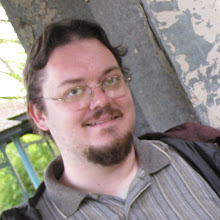For being around as long as Kabbalah has, it has received relatively little opposition, compared to other mystic traditions. I want to contemplate how this relates to the highly Esoteric methods of instruction it employs, and compare it to the Esoteric side of Mormonism.
Mystics, almost by definition, stretch boundaries. They live on the "edge of insanity" where logic and creativity, inspiration and experience, collide. The mystic rarely poses a true danger to others, but "orthodox" thinkers will always feel threatened by their presence because the mystic challenges what has been established.
People who have a mystic experience have to decide what to do with it. If they just sit on it, they aren't going to cause a problem, but they probably aren't going to improve the world either. Some choose to share what they have received, or attempt to share it. This is sometimes part of the revelation, and other times done out of instinct, or desire to help others feel what you have felt.
Sometimes the thing cannot be described owing to technical reasons: An inability to put the experience into words. Other times, it won't be described for practical reasons: To do so would put the mystic in danger. The mystic probably isn't trying to create waves, but merely attempting to fit what he or she has actually felt within the context of what was expected in the context of his or her religious community. So, the secret teaching is born. It can be conveyed in many ways: Obscuring it in parables, expressing it artistically, passing it on to select individuals or successors only, or binding it by oaths.
Early Mormonism applied several of these techniques, especially in regard to Polygamy and the Adam-God teaching. Both of these concepts were introduced by Joseph Smith, Jr., to whom they were given by divine inspiration. Polygamy came out of the bag first, as would be expected since it directly affects family life, and in a close-knit community it would be hard to hide family arrangements for any extended length of time. Adam-God (and the associated doctrine of Exaltation) came out, publicly, at least, after Joseph had already been murdered (quite probably for reasons owing in part to the outside reaction to the doctrine of Polygamy.)
We are left with the last years of "Nauvoo Mormonism," the most mystical and revelatory of all, being also the most secret and mysterious. Oath-bound organizations abounded, such as the Council of Ytfif, the Anointed Quorum or original recipients of the Temple Endowments, and secret sermons and teachings being delivered to Joseph's trusted circle of friends like Brigham Young and Eliza Roxcy Snow Smith (who would later receive yet another additional surname of Young.)
This is a practical, fresh, recent history example of how the very best spiritual light is found in the "darkest" places. Now, apply this back to the Kabbalah and other traditions. If we expect there to be some real meat in a religious, something divine that utterly redefines expectations, where should we expect to find it?
York Rite Kabbalah
11 years ago


No comments:
Post a Comment